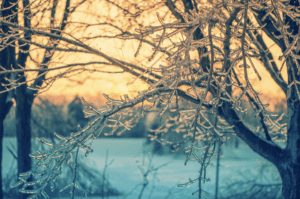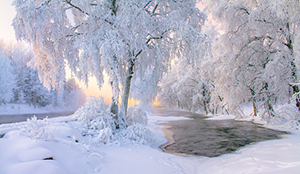Being a tree owner may be a bigger responsibility that some people realize. If you are a homeowner who would like to see your trees be their best, year after year, there is a good deal of maintenance required. Tree growth, plumage, and fruit production all depend on the wellness of the tree.
 Think of your own health. Some people only go to the doctor when something is wrong. Sometimes, the doctor can fix you, but if you have waited too long to check out a problem, there may be more permanent damage. As such, health advocates usually recommend people get annual check-ups so the doctor can catch any problems before they become too serious.
Think of your own health. Some people only go to the doctor when something is wrong. Sometimes, the doctor can fix you, but if you have waited too long to check out a problem, there may be more permanent damage. As such, health advocates usually recommend people get annual check-ups so the doctor can catch any problems before they become too serious.
Trees, as living things, are the same. They can also get sick or diseased if not properly maintained. Also, much like people, trees need special care in the winter, when the cold weather makes it easier to get sick. If you are a property owner with trees on your land, you should be aware of the care needed to keep your trees at their best.
What to Do To Care For Your Trees This Winter
-
Tree Pruning
Why is pruning necessary? Consider trees that are never pruned. Their branches are often unruly. While you may think that gives them a certain charm, there is danger to consider. Limbs that get too long become hazards, whipping in harsh winter winds into whatever might stand in their way. Once snow and ice begin to fall, the danger becomes even more intense, as these now heavy limbs can break and fall, landing on whatever is in their way.
-
Protecting Trees
Young or newly planted trees need special help to survive their first winter in a new home. Pruning is not the first line of action for these trees. Instead, consider insulating these saplings by wrapping them or applying a windbreak. Roots are especially vulnerable, and a layer of wood chips or mulch will help to protect them. This layer of mulch will also help to guard against frost heaving, expansion and contraction of the soil which can expose young roots to the harsh winter elements.
-
Feeding Your Trees
Are you feeding your trees? Have you ever even thought about it? If you have trees that have been growing throughout its season, usually spring and summer, producing fruit or foliage, and staying green, then you most likely have a healthy tree that needs to have continued sustenance through the winter. Look for an appropriate fertilizer or ask for recommendations from your local nursery. In addition, trees need water even during the winter. Before the cold sets in, make sure to give your trees a good watering (if nature has not already done that for you). Then, consider applying fertilizer and a layer of mulch to insulate the roots.
-
Cleaning Your Trees
Because winter often leads to snow, and trees are often near roads, trees often get a part of the treatment given to the roads before and after a snowstorm. If that treatment includes salt or other harsh chemicals, it could splatter onto the trunks of nearby trees either when applied or when plowed with the snow. These chemicals can do damage to the bark of a tree, eating away at its natural protective coating. Keep your roadside trees safe and healthy by cleaning off anything that gets thrown on them by passing plow trucks after a winter storm. If you prefer to get ahead of the game, wrap the trunks nearest the road with burlap to protect the trees ahead of the storm.
-
Tree Bracing
It might be common to remember to brace young trees with stakes and rope while they are growing, but the truth is that saplings are not the only ones who need training or bracing. As trees grow, their branches (and sometimes even the trunks) may start going in a direction you hadn’t planned. If this happens to go over your property line or over a sidewalk in the way of pedestrians, you may need to consider getting cables to retrain, or hold back the intrusive parts of the tree. This can be done with strong string tied to the trunk of the tree.
-
Tree Servicing
Think of your annual tree service the same way you would your annual doctor visit. Sure, you might be okay to skip a year if you are feeling healthy, but you might not catch something that might be going on underneath the surface. Likewise, your trees have no way of telling you when they are suffering from an invisible disease. Getting an appointment with a certified arborist will help to make sure your trees will be their best through the winter.
When to Service Your Trees?
 The timing for your winter preparation can be extended through several months. Some steps can be done earlier, while some steps require more precise timing.
The timing for your winter preparation can be extended through several months. Some steps can be done earlier, while some steps require more precise timing.
Initial inspection of your landscape can take place in the autumn months. Once leaves begin falling, it becomes easier to see any damage that has already inflicted the base of deciduous trees. This is a good time to contact a certified arborist and get further recommendations.
Pruning your trees depends mostly on the type of tree you have. Here’s a brief guide:
- Flowering trees – Late summer/early fall, as they begin to produce.
- Fruit trees – Late winter/early spring, during hibernation.
- Shrubs – Late winter/early spring, during hibernation.
While the immediate protection of your roadside tree trunks will take place throughout the winter, most of your winter preparation will take place by the end of autumn/beginning of winter.
Why You Want to Service Your Trees
Keeping your trees safe and healthy is more than just an aesthetic whim. While you certainly want to keep your yard beautiful for your own viewing pleasure, taking care of your trees goes deeper than that.
- Bugs
Dead wood, such as you would find in trees that have not had proper care, can invite any number of unwelcome insects. Winter is often the time that creatures such as the very destructive pine beetle will lay its eggs, ready in the spring with an army to assault all living trees in the area – the healthy along with the sick. Caring for your trees before the attack can save all the trees in the area from destruction.
- Protection
 A primary reason many homeowners choose to plant trees around their property is to provide it with protection from other elements such as the heat of the summer through the shade of the tall, leafy variety, or from wind and rain. Trees can act as a barrier to keep damage of such a sort from a person’s home. However, damaged or unhealthy trees pose a risk if they are not sturdy enough to stand through the elements themselves.
A primary reason many homeowners choose to plant trees around their property is to provide it with protection from other elements such as the heat of the summer through the shade of the tall, leafy variety, or from wind and rain. Trees can act as a barrier to keep damage of such a sort from a person’s home. However, damaged or unhealthy trees pose a risk if they are not sturdy enough to stand through the elements themselves.
- Animal Homes
True nature enthusiasts will embrace the opportunity to give a home to birds and other woodland creatures during the winter. Healthy trees will provide both food and shelter for birds, squirrels, and other creatures. Get to know your trees, and you can provide yourself and your family with unpredictable entertainment through the doldrums of winter.
Caring for your trees does involve extra care and attention. However, the reward of a beautiful, healthy homestead is most certainly worth the trouble. Winter can be brutal to any living thing residing outdoors, so be sure to do what you can to care for your greenery. More help is available for you at Advanced Tree Care.